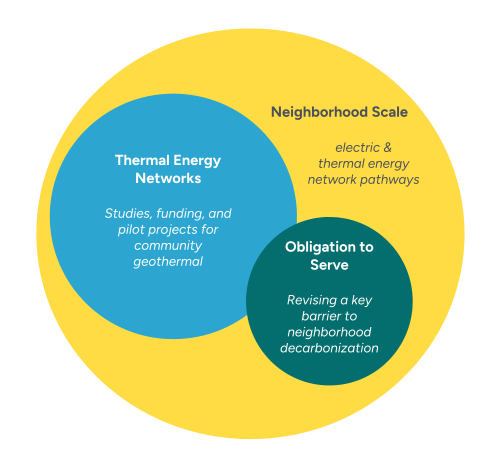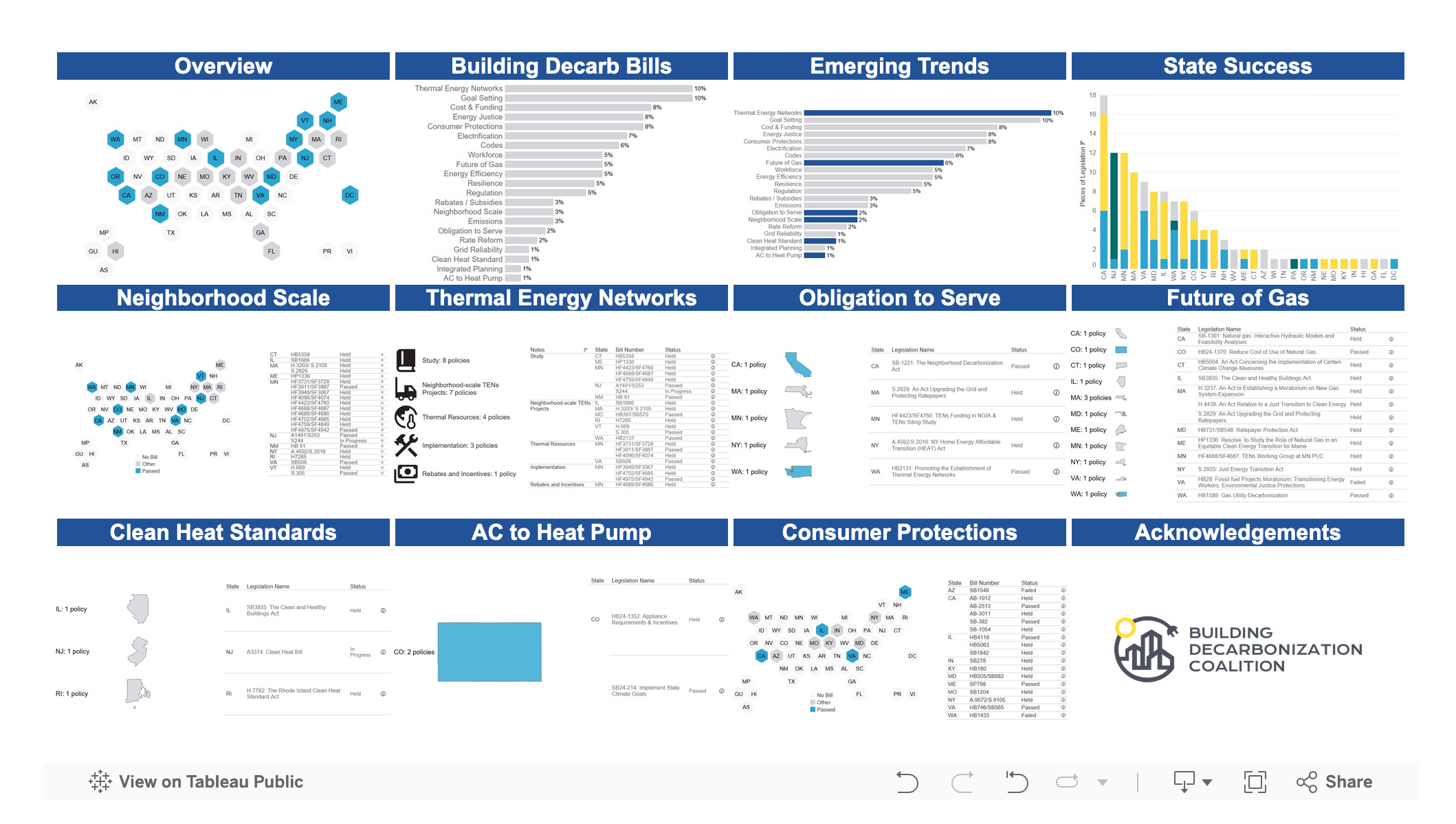
In BDC’s third annual legislative roundup, we identified 130 bills in 30 states (including DC) that would further building decarbonization goals by reducing greenhouse gas emissions, improving air quality, making homes and businesses more resilient, protecting communities from the extreme effects of climate change, and prioritizing the workers who make a clean energy transition possible.
Of these 130 bills, we saw 35 successfully pass across 16 states, meaning 27% of the bills introduced made it over the finish line.
2024 National Legislation Landscape
Decarbonizing whole communities (as opposed to single buildings) stood out as a prevailing trend this year, with 31 bills across 15 states focusing on actions to enable neighborhood-scale solutions, which include neighborhood-scale pilot projects, the study and implementation of thermal energy networks (TENs), and the revision of the “obligation to serve” statute, a potential roadblock for neighborhood-scale projects. Eleven of these bills successfully passed.

Neighborhood scale categories
As we explored in our 2023 whitepaper, Neighborhood Scale: The Future of Building Decarbonization, this emerging strategy for accelerating building decarbonization and transitioning entire neighborhoods off the methane gas system typically involves two clean energy pathways: electrification and thermal energy networks. Three states–CA, WA, and CO–passed bills to authorize and/or plan for neighborhood decarbonization pilot projects that include both of these pathways.
While neighborhood-scale electrification requires some legislative action to accelerate its design and implementation (such as revising the obligation to serve), Thermal Energy Networks tend to require more legislative direction and approval for actions like the creation of new regulatory structures and funding for feasibility studies. This year, we saw an exceptional number of TENs bills, with 23 bills in 12 states introduced and 8 passing (you can read about the defining TENs legislation over the past few years in our BDC blog, A Legislative Heatwave).
National Highlights:
- Five states (WA, CA, MA, MN, and NY) introduced bills to reform the obligation to serve statute in order to enable neighborhood-scale building decarbonization. Washington is the first state in the nation to modify its obligation to serve law to accelerate the clean energy transition by allowing gas utilities to serve thermal energy instead of gas, followed by California, which will allow for gas service to be substituted with clean energy alternatives in Commission-approved neighborhood-scale decarbonization pilots. In a special session, MA grants the Commission authority to alter the obligation to serve when adequate substitutes are available.
- Thirteen pieces of legislation sought to align greenhouse gas emission targets with gas system planning through “future of gas” policies. Areas of focus included: neighborhood-scale gas system decommissioning; integrated system planning for dual fuel utilities; ratepayer funded pipeline replacement programs; line extension allowances; pipeline mapping tools; future of gas proceedings; gas system expansion; just transition for gas workers; and stranded asset risks for gas system investments.
- Three states (IL, NJ, and RI) introduced bills to create new Clean Heat Standards. So far, none of these states have advanced this legislation, but New Jersey is in session until the end of the year and so may join Colorado (2021) and Vermont (2023) in passing a Clean Heat Standard.
- Colorado was the only state to introduce an AC-to-Heat Pump (AC2HP) bill this session. Though the original bill did not pass, there will be a study on AC2HP feasibility in the state.
- Eleven states proposed bills to protect consumers from the harmful effects of methane pollution and a lack of energy service during extreme weather. CA was the first to pass a gas stove warning label bill but was vetoed by the Governor. IL, ME, and VA were all able to pass legislation to protect against utility disconnections during extreme weather.
Tableau Dashboard Overview
Curious to see what other bills were introduced? Check out the rest of our analysis and charts on Tableau (which is best viewed on a computer, not a mobile device). You can also explore the bill details on google sheets (along with bills from 2023 and 2022).

